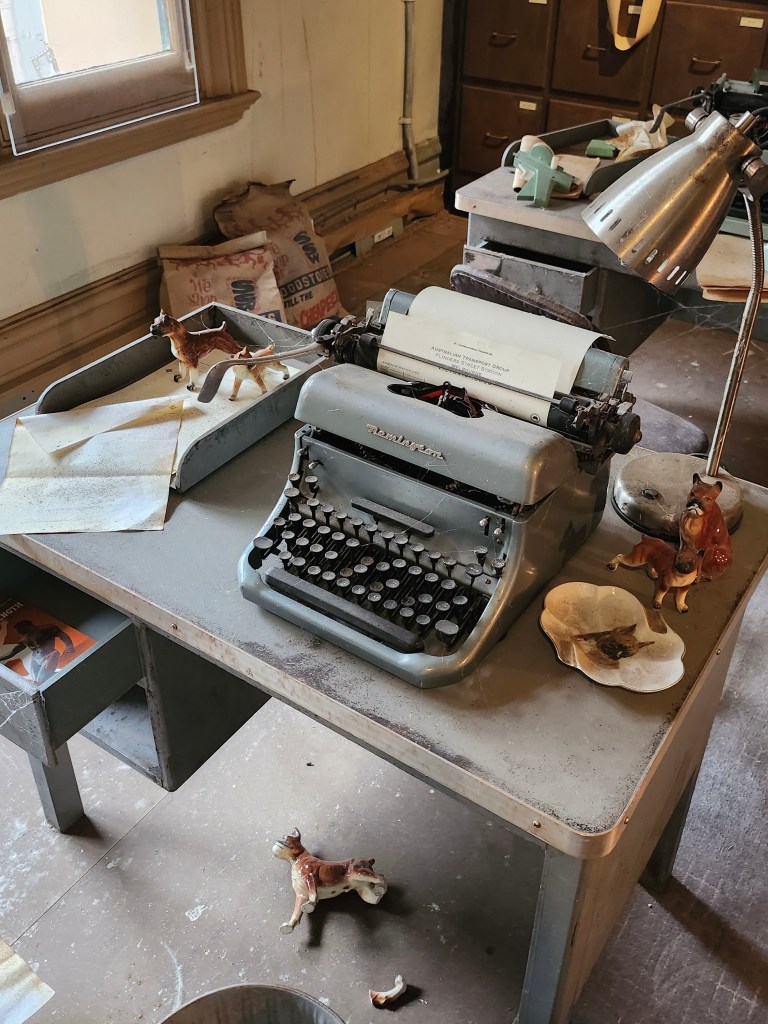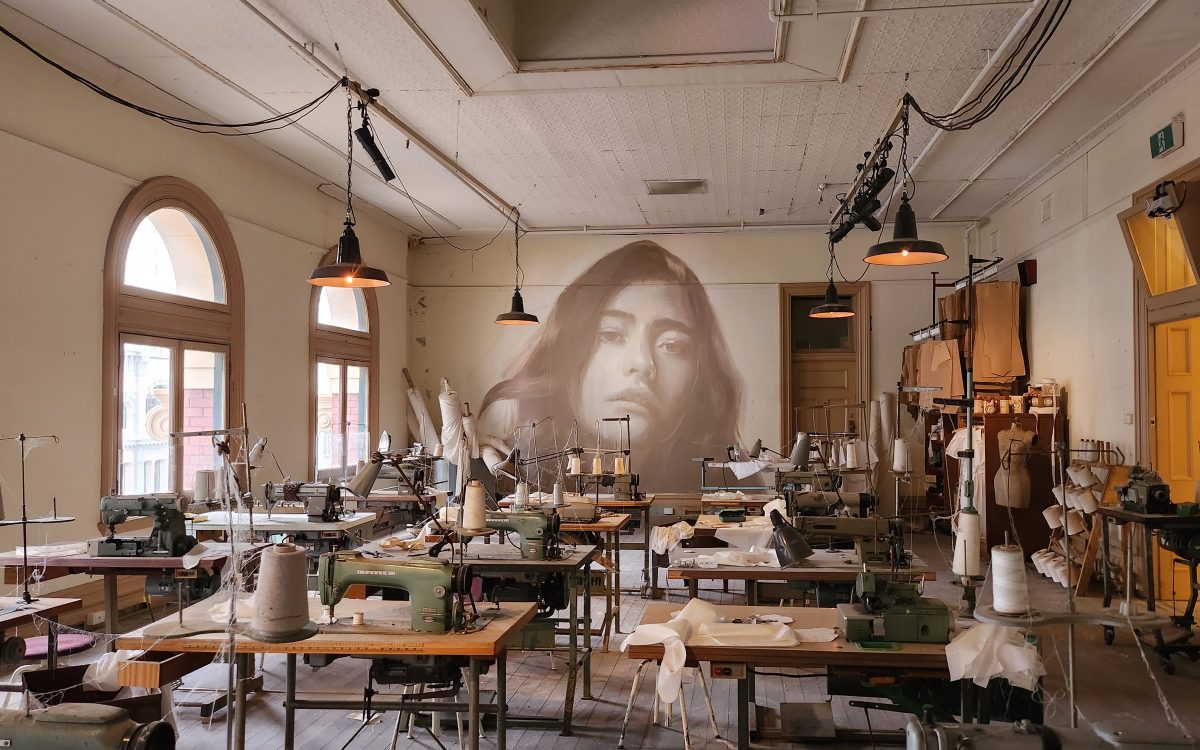Known for extravagant and ambitious installations, Melbourne-based street artist Rone this time turns his attention towards the working class, drawing upon the history of Flinders Street Station.
His latest project Time takes over the entire third level of the iconic building, which was originally home to a range of educational, social and recreational facilities for railway employees, and more recently hosted Patricia Piccinini’s RISING exhibition A Miracle Constantly Repeated.
For Time, Rone and collaborators have recreated a time capsule of post-WWII Melbourne through the lens of its blue-collar workers.
Though none of the spaces are occupied by people – apart from Rone’s signature mural portraits – the traces of their activities are revealed through the artist’s mastery of details.
Working together with set decorator Carly Spooner and set builder director Callum Preston, Rone has produced installations that present storytelling at its best – complex, multilayered and seemingly infinite. From a ceramic boxer lying on the floor with a broken leg to the nub of a well-used pencil in the Work Room, stories and characters linger vividly. Breadcrumbs of struggles and aspirations are hidden in places like an incomplete letter sitting dormant in one of several seemingly-abandoned typewriters, speaking of their desire for art and escape.
It is also within these details that multiple entry points are offered for visitors to engage not only with what’s presented, but with their own stories and memories as well.

In an earlier interview, Rone told ArtsHub: ‘I want to make it feel like everything I’ve done in here has always been here,’ and this is exactly what the artist has achieved.
Adding that photography is an important part of his practice, the in-person experience of his installations certainly lives up to the beauty of his photographic works.
The accompanying music score by Nick Batterham is absolutely critical in setting the scene and heightening the emotional engagement with the installations. Both lighting and composition are powerful elements, rather than supplements, to the entire exhibition – they breathe life into the rooms and objects.
Desk lamps in the Typing Pool flicker in and out harmoniously, guiding visitors from one desk to the next. Towards the end of Batterham’s 12-minute loop, a cascade of dimming lights travels through the entire length of the third-floor corridor and delivers a clever awe-inspiring moment.
Read: Film review: Richard Mosse: Broken Spectre
The portraits of women become a focal point in the intricately detailed rooms, but arguably their power is diminished in this more (con)structured setting, as compared to when they are discovered unexpectedly on the streets. In the latter they are more empowered and rebellious. But then again this puzzlement (‘Why is there a woman’s portrait in this historic room?’) is exactly what Rone wants to achieve, a sign that the illusion he’s created has been accepted as pre-existing and only the mural is the added, or artificial, element.
On the night of the media preview, visitors were invited to begin their journey with an opening in the Flinders Street Ballroom, in which the artist has installed a Glasshouse and at its centre a mural of a woman resembling the popular actress Zendaya in the eyes of this reviewer (Sydney-based model Teresa Oman was listed as the muse).
Upon reflection it is perhaps better that visitors reserve this space as the last in their visit, a sanctuary in which to digest these stories and memories.
Just like history itself, this exhibition presents the kind of spectacular that takes time to settle, giving our eyes time to adjust and seek out the stories embedded into the grandness of the set.
TIME • RONE at Flinders Street Station is now showing; the exhibition has been extended until 23 April 2023 due to high demand. Ticketed.





